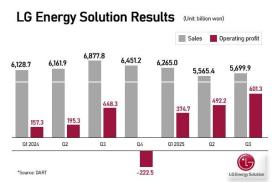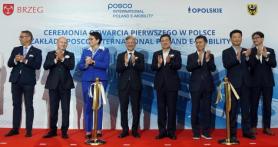
The global shift to electric vehicles has hit a temporary slowdown. Sales have cooled, incentives are waning, and skeptics are asking whether the EV boom has peaked.
Yet the slowdown is likely to last only a few years. The market will recover as costs fall and technology improves. What deserves far more attention, however, is what happens after the battery runs out.
Batteries make up roughly 40 percent of an electric vehicle’s cost. They are the beating heart of the EV revolution — and its biggest environmental challenge. While nations race to improve battery performance, the recycling and disposal of used batteries remain dangerously behind. If governments and manufacturers fail to prepare, the world could soon face a wave of hazardous battery waste.
A quiet but consequential competition is now unfolding between two dominant battery technologies: lithium iron phosphate (LFP) batteries, led by China, and nickel-cobalt-manganese (NCM) lithium-ion batteries, favored in South Korea and Japan.
LFP batteries are cheaper and increasingly popular, but they hold little value at the end of their life. Only about 15 percent of their materials can be recovered through recycling, compared with as much as 95 percent for NCM batteries.
In China, where more than 80 percent of EVs use LFP batteries, reports suggest that many used batteries end up buried — a practice that threatens soil and groundwater contamination. South Korea, known for its stringent environmental standards, risks falling into a similar trap if it does not act decisively.
Burying used batteries is not an option for a country as densely populated and land-scarce as South Korea. Yet recycling remains expensive, and government policy has not kept pace with the industry’s growth.
South Korea's Ministry of Climate, Energy and Environment — recently reorganized to oversee green industries — has been urged to introduce an extended producer responsibility system, requiring manufacturers to take charge of collecting and recycling spent batteries. But progress has been slow.
This is more than a waste management issue; it is an industrial and environmental test of leadership. Countries that develop cost-effective recycling systems will not only prevent pollution but also secure access to critical minerals like lithium, nickel and cobalt — resources that are increasingly vital and politically fraught.
South Korea, home to some of the world’s most advanced battery makers, has an opportunity to lead. A strong policy framework could turn battery recycling from a looming liability into a new pillar of green growth. The question is whether policymakers will move fast enough before the first wave of used batteries becomes an environmental burden.
The EV revolution was never only about cleaner cars. It was about building a cleaner economy. If the world hopes to realize that vision, the next great innovation must happen not in the lab or on the road — but in the recycling plant.
* This article, published by Aju Business Daily, was translated by AI and edited by AJP.
Copyright ⓒ Aju Press All rights reserved.



